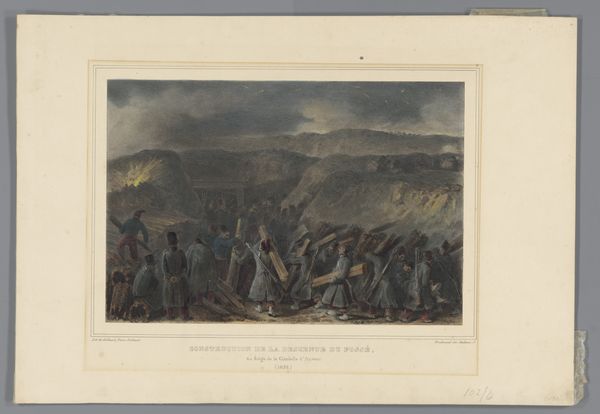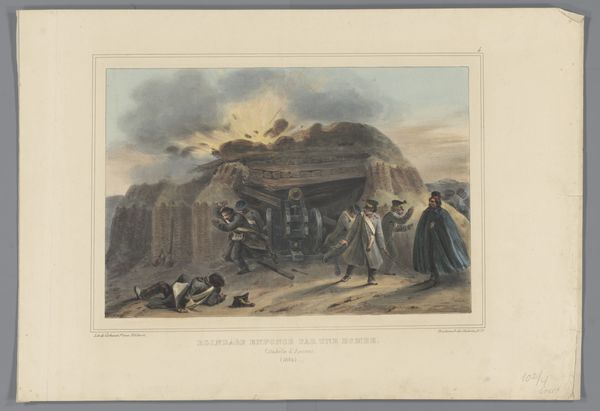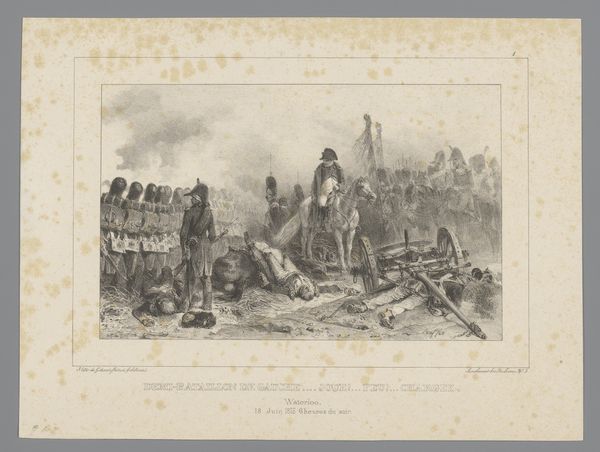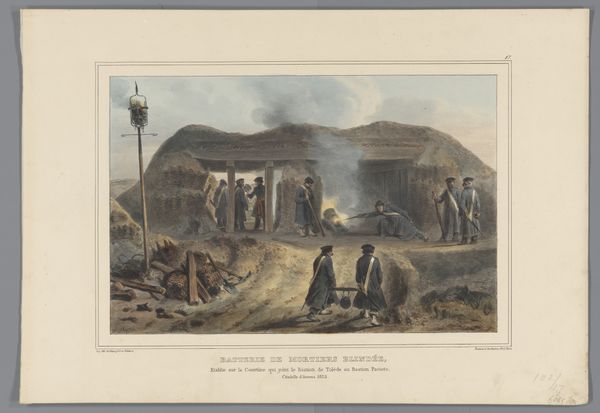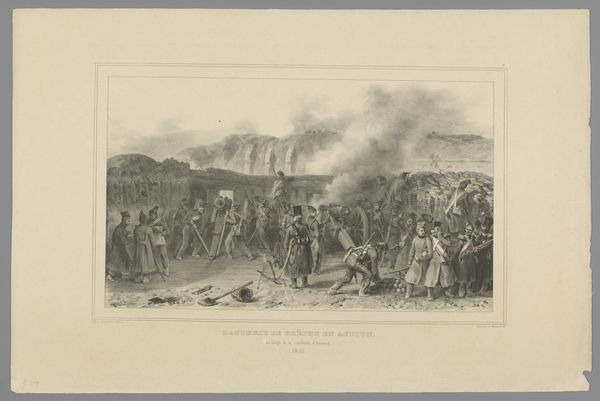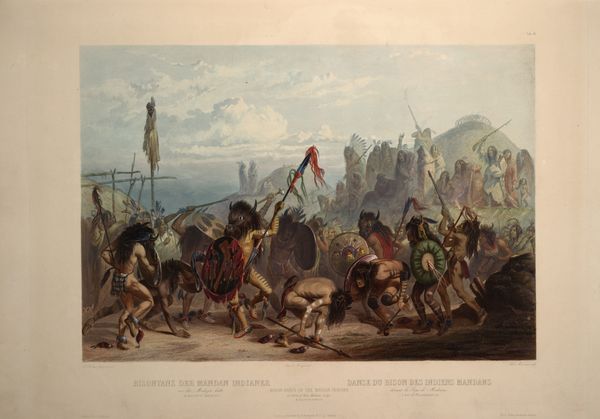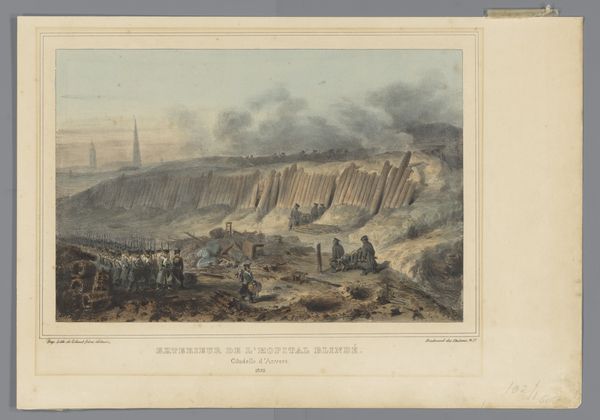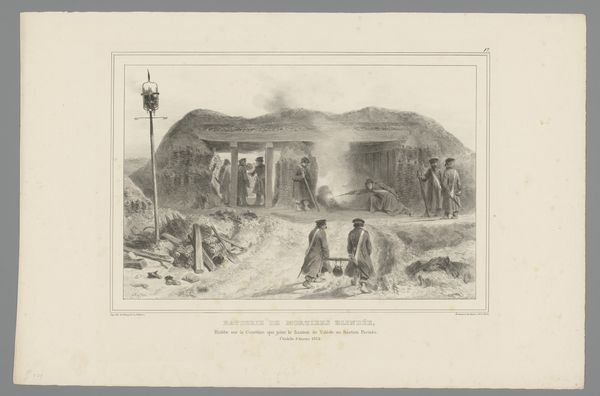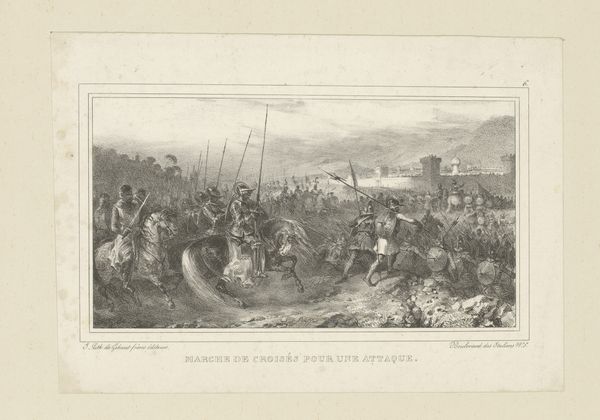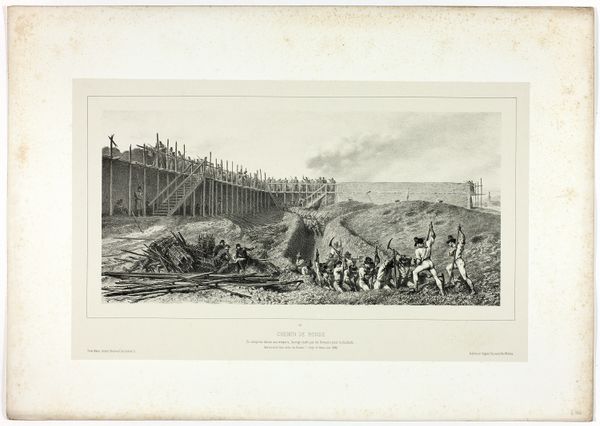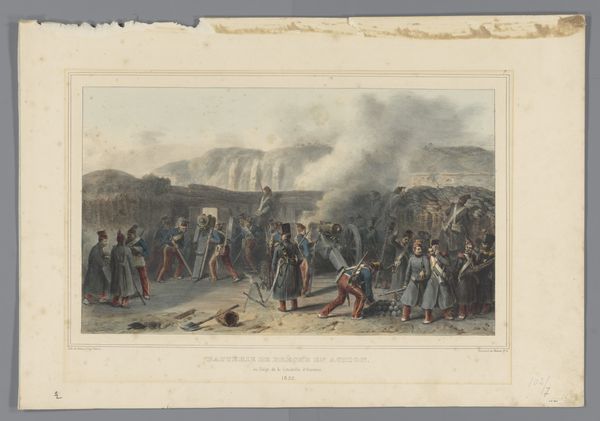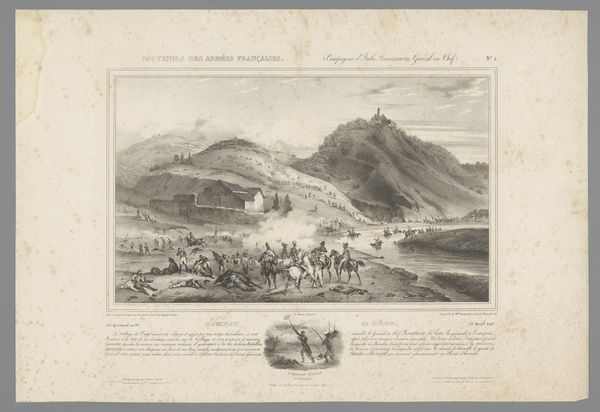
drawing, watercolor, pencil
#
drawing
#
water colours
#
landscape
#
watercolor
#
coloured pencil
#
romanticism
#
pencil
#
history-painting
Dimensions: height 346 mm, width 500 mm
Copyright: Rijks Museum: Open Domain
Editor: Auguste Raffet's "Groep soldaten trekt door een opening in de palissade, 1832," created around 1833 using watercolor, pencil, and coloured pencil, is really evocative. It feels incredibly chaotic but organized simultaneously, with these soldiers breaching what appears to be a fortified position. What stands out to you in this piece? Curator: The enduring image here is one of transition and in-between spaces. Notice how the palisade, typically a symbol of rigid defense, has a clear opening. That breach represents more than just a military tactic. Doesn’t it remind you of historical shifts and cultural upheavals represented throughout art history? How does the breach of fortifications play out symbolically? Editor: That’s interesting! So you’re saying that the literal gap in the wall functions as a symbolic space as well. I see it more like the Romantic style's preoccupation with the drama of war, just represented differently from paintings showing epic battles. Curator: Precisely. And Romanticism wasn't just about glorifying war, it was about exploring the psychological and emotional impact of historical events. Think of the bundled firewood. What does the symbol of fire represent in art throughout the ages? Think about purification, destruction, or even warmth in a cold and dangerous landscape. What resonates most strongly with you given the soldiers’ expressions? Editor: I hadn't considered the firewood that way. Given the expressions on their faces – mostly determination, I'd say perhaps the idea of the soldiers needing warmth while confronting adversity? Curator: Yes! Symbols acquire meaning based on cultural context and also, of course, our own individual experiences. Reflect on that intersection of meaning. Think how artists help crystallize both personal and collective experiences with recurring symbols. Editor: That gives me a lot to think about regarding not only Raffet's piece, but about symbolism in art more broadly. Curator: Exactly! Hopefully, next time you view an image like this you will look closer at the symbolic interplay embedded in it!
Comments
No comments
Be the first to comment and join the conversation on the ultimate creative platform.
